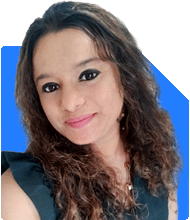Ramalingam Kalirajan |10881 Answers |Ask -Follow
Mutual Funds, Financial Planning Expert - Answered on Apr 29, 2024
He has an MBA in finance from the University of Madras and is a certified financial planner.
He is the director and chief financial planner at Holistic Investment, a Chennai-based firm that offers financial planning and wealth management advice.... more

Dear Sir My age is 34 yrs. I have working alredy 10 yrs and my average total income till date 40L minimum. Still I did not save 1rs till now. Request you please advice how to start savings also make future retirement plan. My expected retirement age is 55yrs.
1. Assess your situation:
Track your expenses: For a month, track where your money goes. This will help identify areas to cut back and free up savings.
Emergency fund: Aim for 3-6 months of living expenses in an easily accessible savings account for emergencies.
2. Start saving:
Automated savings: Set up a Systematic Investment Plan (SIP) in a mutual fund. Start small, even with ?1,000 per month, and gradually increase as you get comfortable.
3. Retirement plan:
Employer benefits: Check if your employer offers a retirement plan like a Provident Fund (PF). Contribute the maximum allowed for tax benefits and long-term savings.
Individual options: Explore options like National Pension System (NPS) or Equity Linked Savings Schemes (ELSS) for long-term growth. Talk to a Registered Investment Advisor (RIA) for personalized advice based on your risk tolerance and goals.
Here's a breakdown based on your income:
You mentioned an average annual income of ?40 lakhs. Aim to save at least 10-15% of your income, which translates to ?4,000-?6,000 per month.
Remember: Consistency is key! Starting early, even with a small amount, allows time for your savings to grow through the power of compounding. Don't be discouraged if you can't save a lot initially. Every little bit counts!
You may like to see similar questions and answers below
Jinal Mehta | Answer |Ask -Follow
Financial Planner - Answered on May 20, 2024
Ramalingam Kalirajan |10881 Answers |Ask -Follow
Mutual Funds, Financial Planning Expert - Answered on May 23, 2024
Ramalingam Kalirajan |10881 Answers |Ask -Follow
Mutual Funds, Financial Planning Expert - Answered on Aug 13, 2024
Ramalingam Kalirajan |10881 Answers |Ask -Follow
Mutual Funds, Financial Planning Expert - Answered on Jun 21, 2025
Reetika Sharma |423 Answers |Ask -Follow
Financial Planner, MF and Insurance Expert - Answered on Sep 17, 2025
Nayagam P P |10854 Answers |Ask -Follow
Career Counsellor - Answered on Dec 14, 2025
Radheshyam Zanwar |6744 Answers |Ask -Follow
MHT-CET, IIT-JEE, NEET-UG Expert - Answered on Dec 14, 2025
Radheshyam Zanwar |6744 Answers |Ask -Follow
MHT-CET, IIT-JEE, NEET-UG Expert - Answered on Dec 14, 2025
Dr Dipankar Dutta |1840 Answers |Ask -Follow
Tech Careers and Skill Development Expert - Answered on Dec 14, 2025
Dr Dipankar Dutta |1840 Answers |Ask -Follow
Tech Careers and Skill Development Expert - Answered on Dec 13, 2025
Dr Dipankar Dutta |1840 Answers |Ask -Follow
Tech Careers and Skill Development Expert - Answered on Dec 13, 2025
Mayank Chandel |2575 Answers |Ask -Follow
IIT-JEE, NEET-UG, SAT, CLAT, CA, CS Exam Expert - Answered on Dec 13, 2025
Radheshyam Zanwar |6744 Answers |Ask -Follow
MHT-CET, IIT-JEE, NEET-UG Expert - Answered on Dec 13, 2025
Mayank Chandel |2575 Answers |Ask -Follow
IIT-JEE, NEET-UG, SAT, CLAT, CA, CS Exam Expert - Answered on Dec 13, 2025
Mayank Chandel |2575 Answers |Ask -Follow
IIT-JEE, NEET-UG, SAT, CLAT, CA, CS Exam Expert - Answered on Dec 13, 2025










.jpg)















